Photographs: Danish Siddiqui/Reuters.
The Confederation of Indian Industry (CII) has called for speedy implementation of key railway projects, such as the Dedicated Freight Corridor, high-speed rail corridors, rolling stock and other capacity enhancement works.
"Investments in rail infrastructure are high priority as they add efficiencies to national competitiveness and reduce transaction and supply chain costs," said Chandrajit Banerjee, Director General, CII, ahead of the presentation of the Rail Budget on 26 February.
Commending the recent increase in passenger and freight rates, Banerjee noted that higher revenues would offer more opportunities for targeting a zero-tolerance approach to issues in safety.
...
Complete coverage: Union Budget 2013-14
Budget Impact Live!
How Indian Railways can be turned around
Photographs: Daniel Berehulak/Getty Images.
Modernisation and technology upgradation of signaling, train protection warning system, integrated security systems, etc must be addressed in the Rail Budget.
CII's major suggestions for development of Indian Railways include improved project implementation, streamlined and time-bound approvals, project terms for 'reasonable' returns on capital for investors, and more efficient vendor management.
In the long term, Indian Railways would need to look at heavier, faster and longer trains, plugging gaps in rolling stock supply, modern technologies for safety, better cargo handling, and other issues to improve performance.
Capacity creation in Indian Railways could be fast-tracked through key initiatives to encourage public-private partnerships (PPP).
...
How Indian Railways can be turned around
Image: A girl peers out from a carriage at Nizamuddin Railway Station.Photographs: Daniel Berehulak/Getty Images.
Transparency must be built into the process by adding frameworks for RFQ, RFP and concession agreement templates, as in other infrastructure ministries, suggested CII.
"Indian Railways envisages increasing of revenues by three times to Rs 2.70 lakh crores in the next ten years and this will be possible only if private investments are encouraged and expanded," said Banerjee.
Currently, industry awaits changes in policies relating to wagon leasing, private freight terminals, special freight train operations, and others that would promote private sector participation in the rail sector.
Banerjee observed, "Consultations need to be held with stakeholders other than rail users, including logistics players, financial investors, and industry sectors for implementing rail projects."
...
How Indian Railways can be turned around
Image: Workers wait to cross tracks as a train to passes nearby to the Nizamuddin Railway Station.Photographs: Daniel Berehulak/Getty Images.
On taxing and price issues, CII recommended periodic changes in freight classifications and charges, with prior intimation to industry for greater stability and predictability.
A system of 'Premier Customers' or users contributing more than Rs 1,000 crore annually could be considered.
CII emphasized that signaling, telecommunication and electrification material should be brought under section 14 of CST Act and standardized to a rate of 5%.
For better vendor management and procurement, Indian Railways must change procedures. Improved order management, long-term contracts, procurements based on 'life-cycle cost' etc are some of the areas to be addressed.
...
How Indian Railways can be turned around
Image: Families alight from a train at the Nizamuddin Railway Station.Photographs: Daniel Berehulak/Getty Images.
Indian Railways is a key infrastructure growth driver and contributes about 1.2% of India's GDP. According to the Vision 2020 document, this has to be raised to 3% in the next 10 years.
Thus, growth has to move from Rs 90,000 crore of revenue in 2011-12 to Rs 2,70,000 crore in the next 10 years.
Indian Railways achieved a loading of 960 million tonnes in 2011-12, which is expected to go beyond 1000 million tonnes of traffic in the current fiscal year.

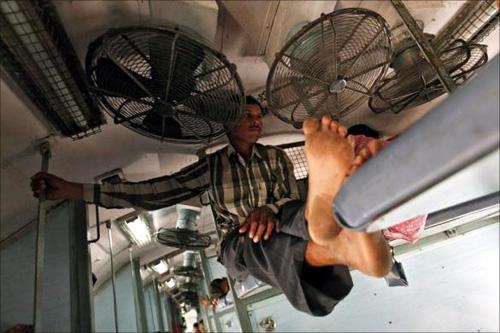
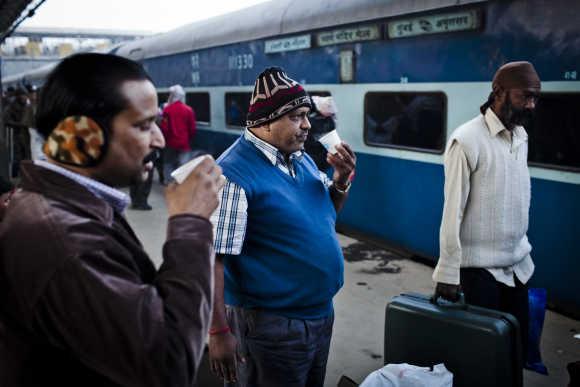
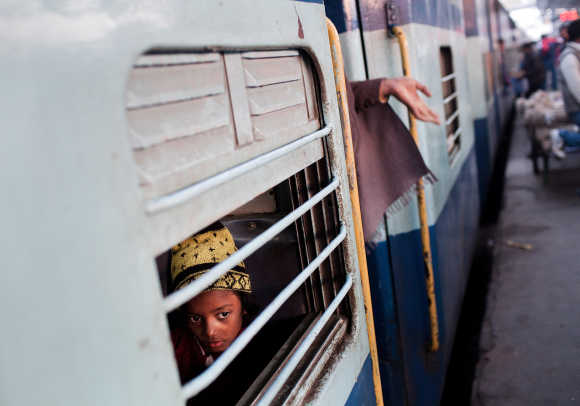
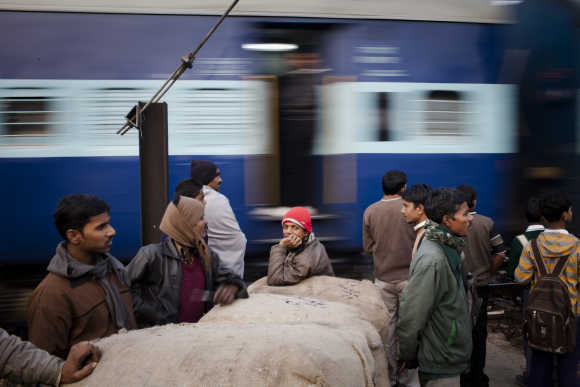
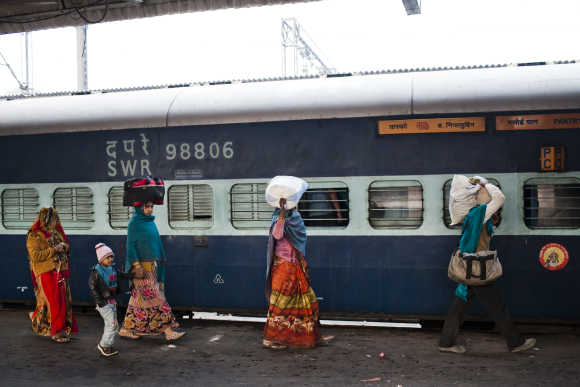
article